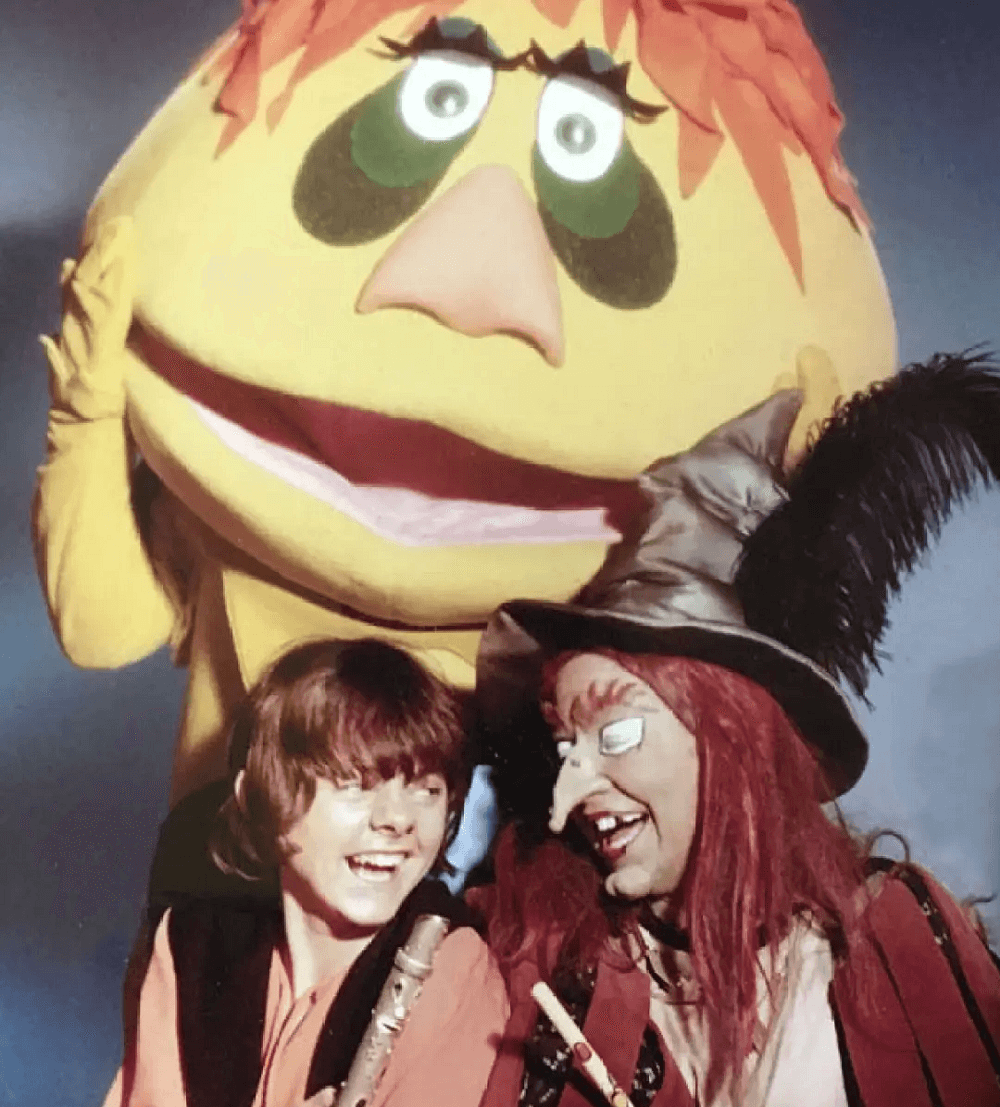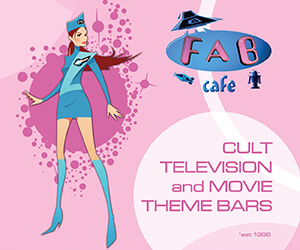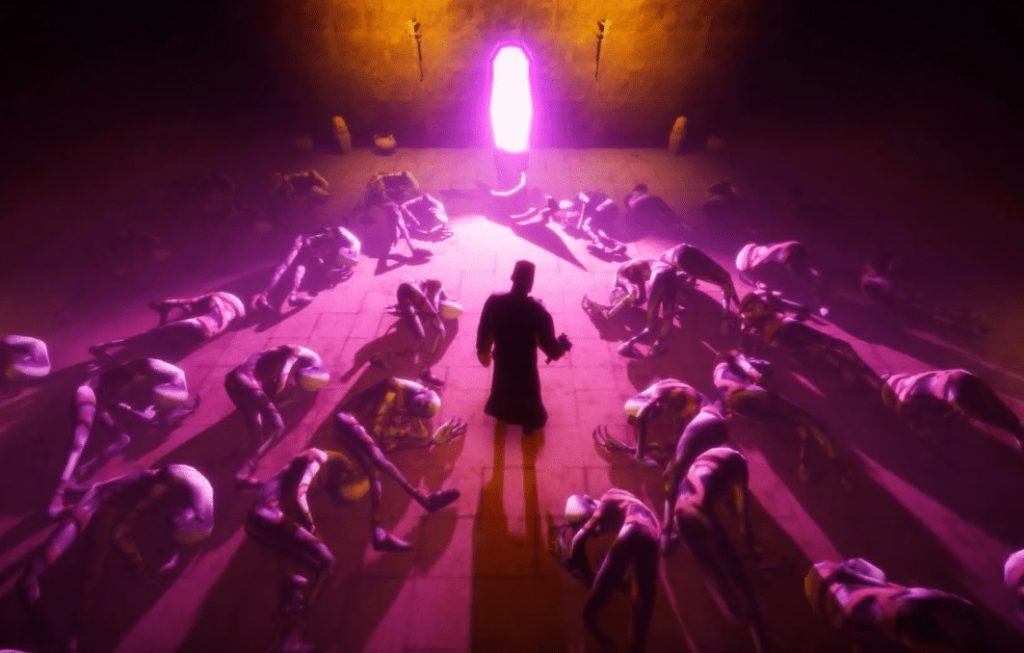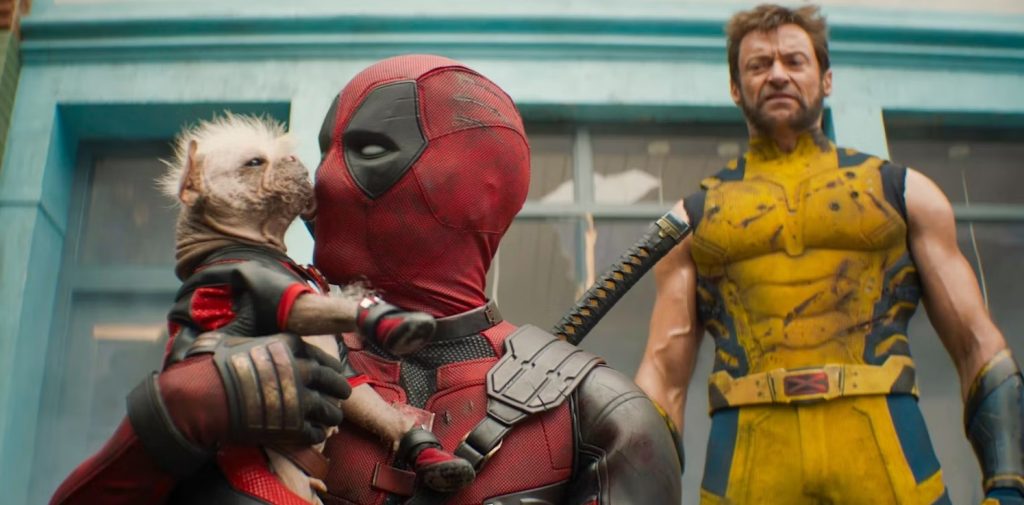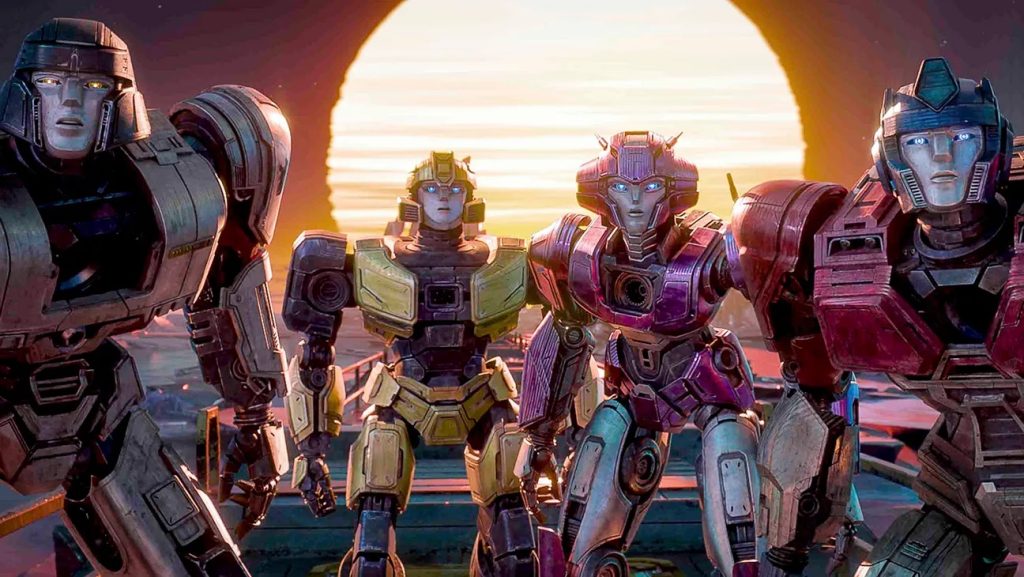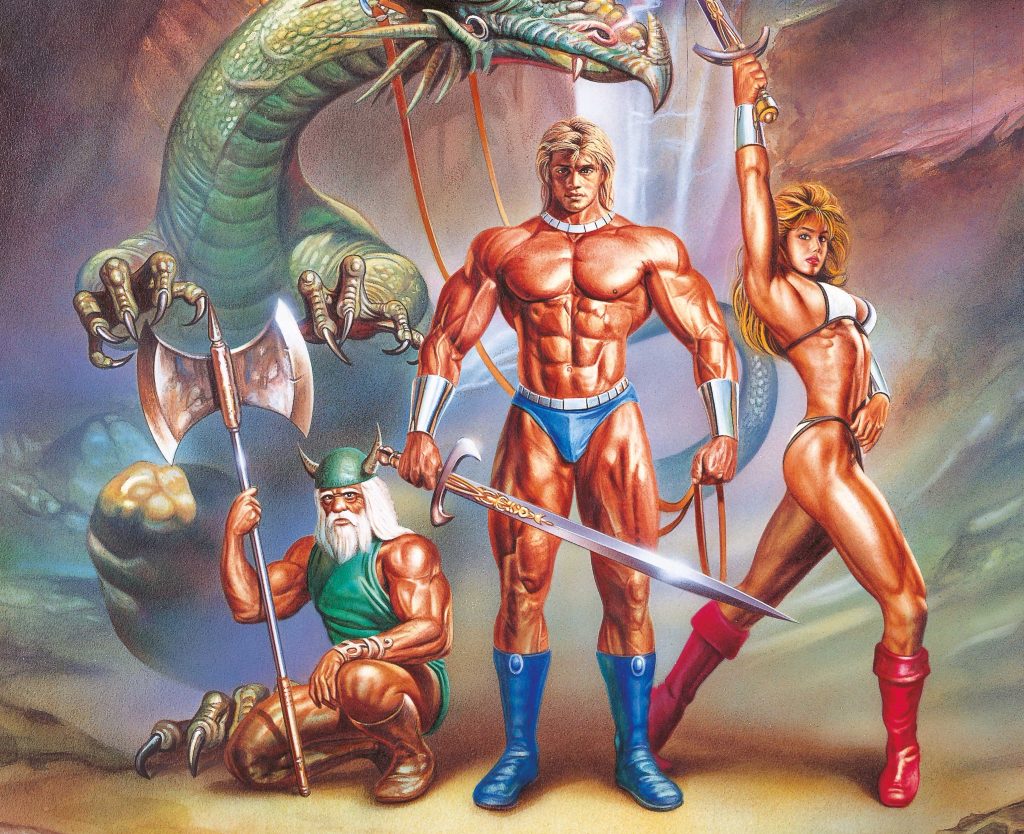Ah, telephemera… those shows whose stay with us was tantalisingly brief, snatched away before their time, and sometimes with good cause. Dedicated miners of this fecund seam begin to notice the same names cropping up, again and again, as if their whole career was based on a principle of throwing stuff at the wall and seeing what sticks. What’s more, it isn’t all one-season failures and unsold pilots, there’s genuine gold to be found amongst their hoards; these men are surely the Titans of Telephemera!
SID & MARTY KROFFT
Sid and Marty Krofft were born in Montreal, Quebec, but their clockmaker father soon moved them to New York City, where Sid began working as a puppeteer, becoming a featured performer with the Ringling Brothers and Barnum & Bailey Circuses. In the 1940s, Sid took his puppet show overseas, accompanied by his father, and it was while he was in Paris that younger brother Marty began performing back home with Sid’s puppets. When Sid returned from Europe, the two started working together, creating the adult themed Les Poupées de Paris show and launching a puppet and costume workshop, creating mascots for Six Flags amusement parks amongst others.
In 1968 they were hired by Hanna-Barbera to design The Banana Splits for NBC, leading to the network giving the greenlight to the first of their own ideas, a light fantasy about an eleven-year-old boy, his talking flute, and his adventures on Living Island. The success of this show, launched with a one-hour special by The Banana Splits themselves, would make Sid and Marty Krofft the tiniest of telephemeric titans!
HR Pufnstuf (NBC, 1969): HR Pufnstuf began life as a commission from Coca-Cola for their pavilion at the 1968 World’s Fair in San Antonio, for which the Krofft brothers created a show called Kaleidoscope. The centrepiece of the show was an enchanted dragon who – alongside a wicked old witch, an ape, and a matador – wowed child visitors to the fair. The witch and the dragon, now anthropomorphised in what would become the Kroffts’ signature style, made it through to the new TV concept, with human boy Jimmy and his talking flute Freddy washing up on Living Island after taking a ride in a mysterious boat.
Unbeknownst to them, the boat belonged to the evil witch Wilhelmina W Witchiepoo and she had designs on the pair but, luckily, they were met by the Mayor of Living Island, a friendly dragon named HR Pufnstuf. Jimmy was played by Jack Wild, who had shot to fame as The Artful Dodger in the 1968 movie Oliver! And who Sid Krofft had to take guardianship of while he was in the US to film the series. Stage actress Billie Hayes was cast as the sinister sorceress, and the physical role of Pufnstuf was portrayed by Roberto Gamonet but voiced by animation regular Lennie Weinrib, who specifically chose to give the Mayor a West Ohio accent. Weintraub also provided voices for some of the supporting cast, including Orson Vulture and Stupid Bat, giving character to the technicolour parade of puppets and costumes.
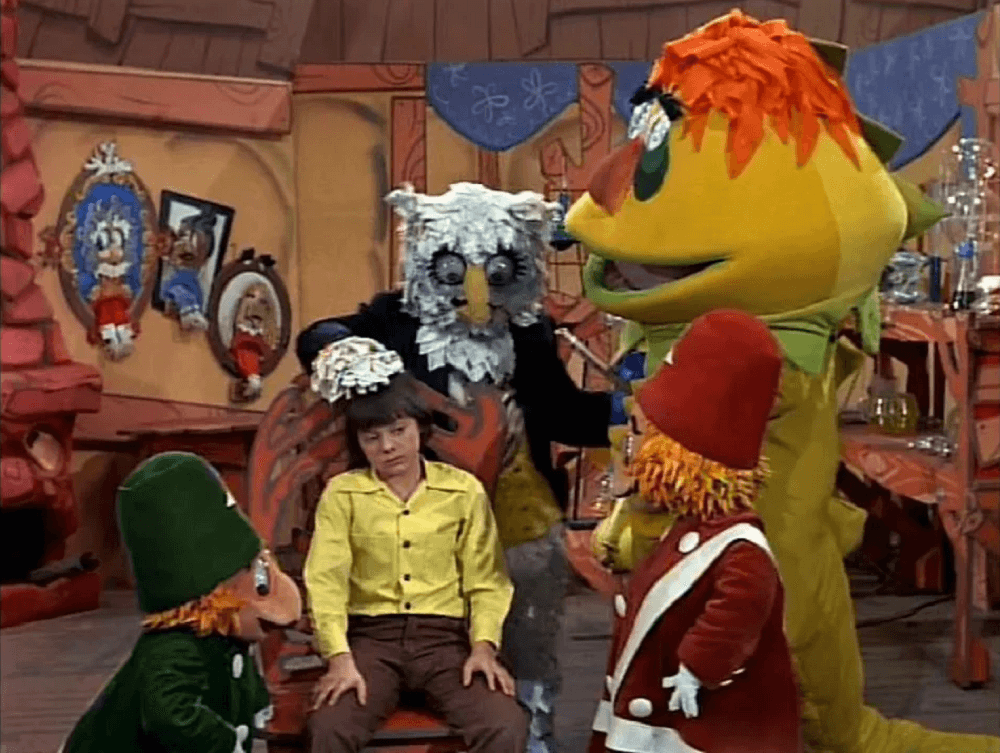
The central conceit was that Jimmy had to find his way home, despite enjoying his time on Living Island (where he celebrated his twelfth birthday). To do so, he aided Living Island regulars like Judy Frog, the Clock Family, and Dr Blinky in their battles against the hexing hag but, true to most series of this kind, he never did make it home before the end of the first season. And that was all she wrote, with the Kroffts describing the production of the show as a headache, eager to move on to their next project. There was a movie produced simultaneously with the series, released in 1970 (but without Weinrib’s voice talents), and a stage tour continued through to the mid-1970s, but the Kroffts’ overflowing box of creativity couldn’t be nailed shut and there was The Bugaloos to consider.
In 1977, Sid and Marty Krofft successfully sued the McDonald’s Corporation over their McDonaldland concept, with Mayor McCheese found to be particularly derivative of HR Pufnstuf himself. As a result of the judgment, McDonald’s had to take the characters out of circulation until they could be sufficiently retooled to be distinct from the Kroffts’ creations. HR Pufnstuf was shown in some ITV regions in 1972 but faded quickly from the popular imagination in the UK. It remains a cultural standby in the US, fondly remembered as a show which must have been influenced by hallucinogenic substances (a claim strenuously denied by the Kroffts) and made a curious appearance in erotic dream sequences that were part of the Amazon Prime show Goliath in 2018.
The Bugaloos (NBC, 1970): The Bugaloos arrived in September 1970, thirty minutes earlier on Saturday mornings than HR Pufnstuf (which was repeated later in the day for a double dose of Krofft weirdness). This time the action was set in Tranquility Forest, a fantasy setting that was home to the titular four-piece band, who all wore fairy wings. Despite the issues they’d faced with casting a Brit as Jimmy in their previous show, the Kroffts wanted British actors to play The Bugaloos and began an exhaustive audition process that included Phil Collins amongst those considered for a role.
In the end, Scottish musician John McIndoe got the role of IQ, the grasshopper leader of the band, with Wayne Laryea, John Philpott, and Caroline Ellis as bumblebee Harmony, ladybird Courage, and butterfly Joy, respectively. The quartet were flown to Los Angeles for filming, given minimal costumes that included insect wings, and set about making the seventeen-episode first season. The peril in the show was provided by Benita Bizarre, a bitter old crone set on silencing The Bugaloos for good, aided by her chauffeur Funky Rat and two living speakers named Woofer and Tweeter, all created by the Kroffts in their usual psychedelic style.
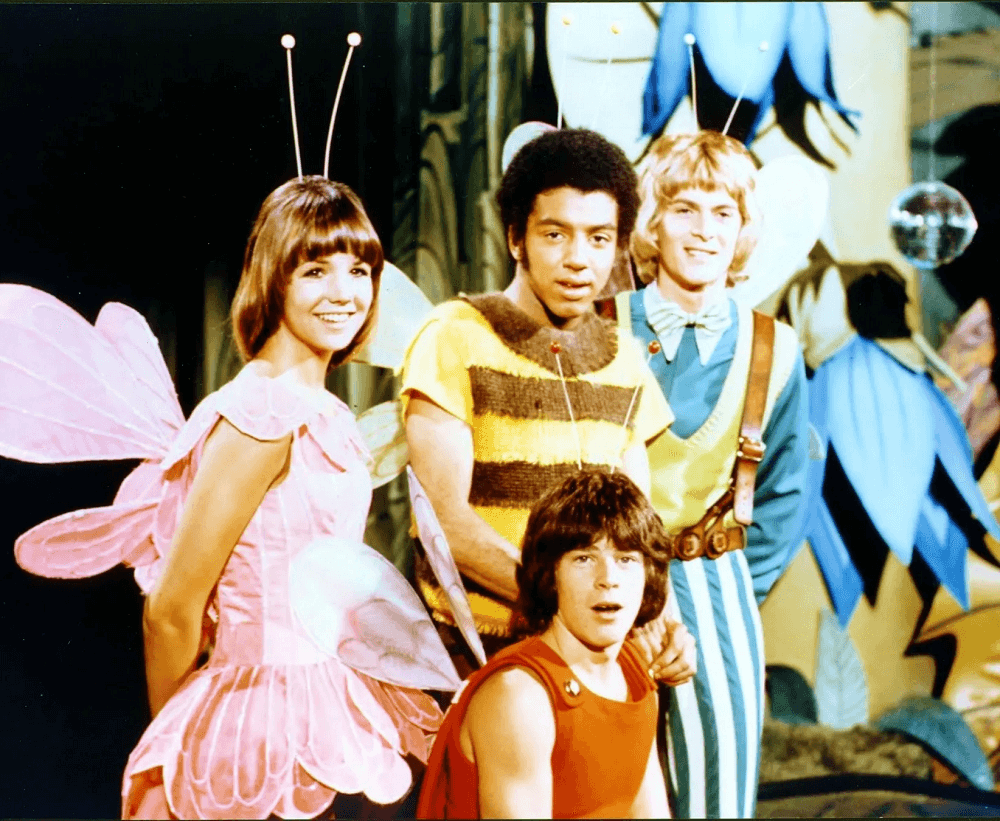
Martha Raye, who was known for the size of her mouth in proportion to her face, was cast as Benita, having impressed the Kroffts while playing the part of Boss Witch in the Pufnstuf movie, and she set about her task with obvious glee, employing such dastardly designs as stealing Joy’s voice with the Audio Dynamic Voice Switcher, convincing Courage that he is her nephew Melvin, and repeatedly kidnapping Sparky, a friendly firefly who becomes part of the band’s gang.
There was to be a second season, but the British cast got confused over dates and returned home before filming could begin, leading the ever-fidgetty Kroffts to move onto their next project early. That show – Lidsville, starring Butch Patrick as a young boy who falls into a world of living hats – debuted in September 1971 but failed to gain the traction the brothers’ earlier shows had, despite earning a comic book from Gold Key. Rather than rush into their next project, the Kroffts decided to take their time bringing it to life, a gamble that paid off in spades.
Sigmund and the Sea Monsters (NBC, 1973): Unlike the previous three Krofft shows, Sigmund and the Sea Monsters – which debuted in September 1973 after a year’s break for the brothers – was set in the real world, or at least an approximation of it. Rather than travel to a fantasy land, brothers Johnny and Scott Stuart (played by Family Affair’s Johnny Whittaker and Me and the Chimp’s Scott Kolden) discovered a friendly sea monster washed up on their local beach, taking him under their wing when they discover he has been kicked out of his family for failing to scare humans.
Sigmund Ooze, to give him his full name, was brought to life by dwarf actor Billy Barty (who had founded the Little People of America organisation in 1957) and voiced by Walker Edmiston. His family – headed up by Sweet Mama and Big Daddy Ooze – had not only rejected Sigmund for his less than monstrous ways, but they were also set on trying to harm Johnny and Scott, presumably with the intention (unstated) of eating them. The seventeen-episode first season saw them thwarted at every turn, with Sigmund learning valuable lessons about what it means to be part of a family that accepts him along the way.
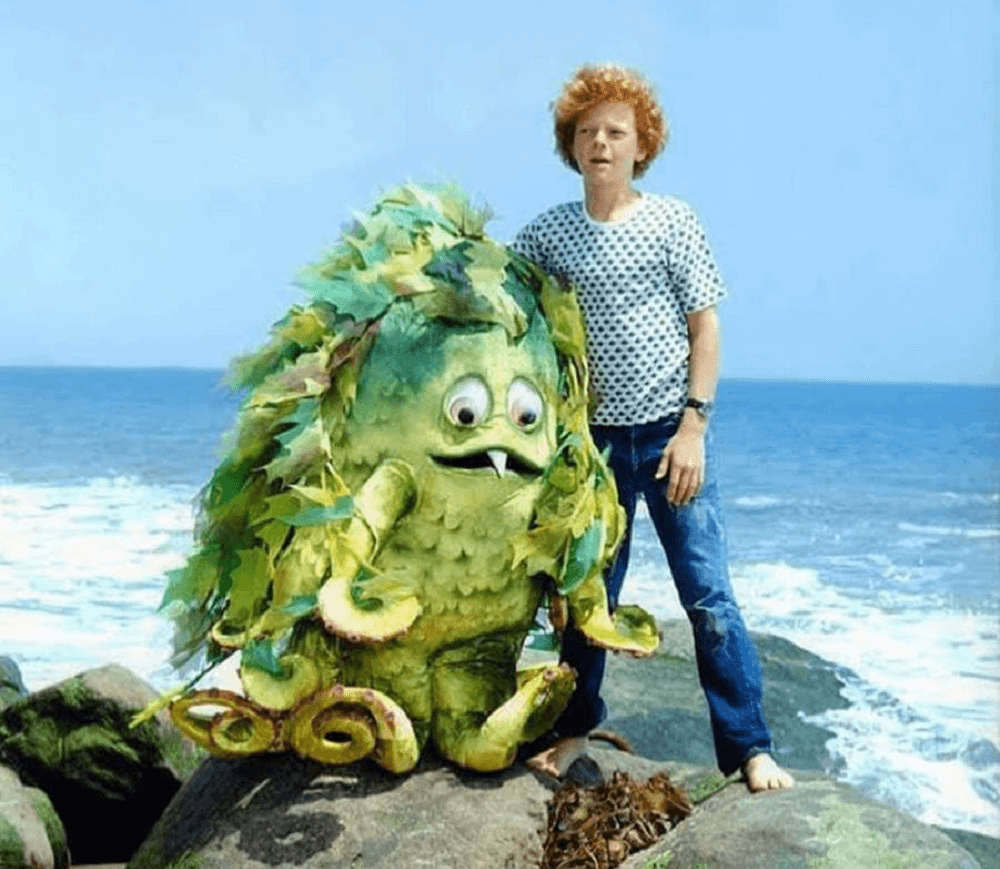
Episode sixteen – “The Wild Weekend” – saw Jack Wild appear as himself, coming to stay with the boys for a spell and helping them find the Ooze family’s pet lobster, Prince, capping off an inventive and fun first year for the show that was only made better when news broke that, for the first time, a Krofft show would be returning for a second season. Twelve further episodes began airing in July 1974, with HR Pufnstuf guest-starring as a result of the magic-gone-wrong of Sheldon, a sea genie played by Rip Taylor who was introduced for the sophomore outing.
The final new episode aired in November 1974 and the show was re-run on NBC afterwards, going into syndication in 1975 and becoming a part of The Krofft Superstars syndicated package from 1978. In 2015, it was announced that Amazon were to reboot Sigmund and the Sea Monsters, with a pilot following in June 2016. Starring Solomon Stewart and Kyle Harrison Breitkopf as Johnny and Scott, the concept was retooled to add David Arquette’s monster hunter Captain Barnabus. Six further episodes followed in September 2017 but Sigmund hasn’t been sighted since.
Land of the Lost (NBC, 1974): As the second season of Sigmund and the Sea Monsters got underway on NBC, the final touches were being put to the Kroffts’ new show for Fall 1974. More of a straight adventure yarn than the previous shows, Land of the Lost starred Spencer Milligan as Rick Marshall, an outdoorsman who is rafting with his children Will and Holly through the Grand Canyon, only to tumble over a waterfall and enter a dimensional portal. Transported to the Land of the Lost, Rick and his children have to navigate the various dangers they encounter – mostly dinosaurs, to be honest – and live alongside the apemen Pakuni and lizard-like Sleestak, two humanoid tribes who populate the titular world.
Land of the Lost was a huge leap forward for the Kroffts, with stop-motion and puppetry used for the dinosaurs and a series of rubber costumes and prosthetics created to bring the non-human characters to life. Furthermore, a linguist was brought in to create a realistic language for the Pakuni and Sleestak, and noted science-fiction writers Ben Bova, DC Fontana, and Larry Niven all contributed scripts for the first season of seventeen episodes. The final episode of season one, “Circle”, even revealed that Rick Marshall was unwittingly responsible for the creation of the portal that brought he and his family to this strange new world in a paradox that would have confused some of the show’s less sci-fi educated viewers.
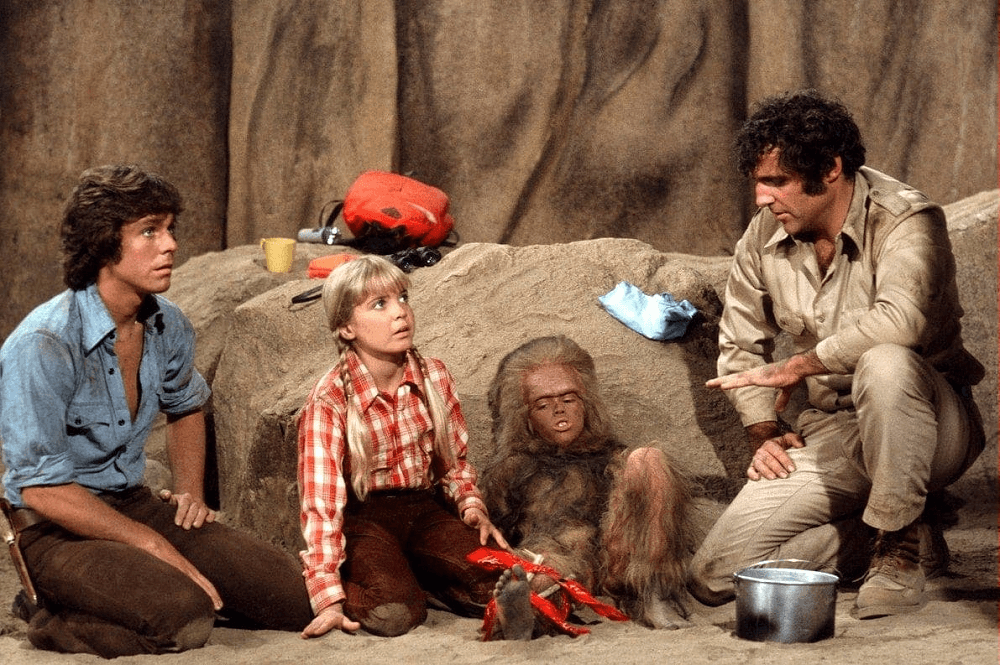
In September 1975, Land of the Lost returned for a second season, with Theodore Sturgeon and Donald F Glut added to the writers’ pool, and the family again tried to return home, aided by a time-displaced native called Enik. The show was such a success that it was again renewed at the end of its thirteen-episode second season. Although Milligan opted out over a dispute about money. This obviously created problems for the narrative, swiftly resolved by having him return home off-screen by another mysterious portal, leaving his children behind; they are discovered by their uncle Jack, who stumbles through the original portal whilst on a search mission for the family, and Ron Harper smoothly stepped into Milligan’s shoes.
Season three consisted of another thirteen episodes and finished without the family finding their way home, which was unfortunate as it did not return for a fourth outing, stranding the Marshalls in their new world. In 1991, the series was rebooted on ABC, with the Porter family – dad Tom and kids Kevin and Anne – flung into a familiar-looking land inhabited by dinosaurs, Pakuni, and Sleestaks. Two seasons again left them stranded in the strange world at the end of its run, a fate not experienced by Will Ferrell’s version of Rick Marshall (and his kids this time) in the 2009 film version, which sadly flopped at the box office, making only two-thirds of its $100 million budget back.
The Lost Saucer (ABC, 1975): Buoyed by the success of Sigmund and Land of the Lost, the Krofft brothers had two new shows in production for the Fall 1975 season, both of which were due to air away from their NBC home. Far Out Space Nuts began on September 6th on CBS at 11am, with The Lost Saucer having debuted ninety minutes earlier over on ABC. This meant that a dedicated Krofft fan could watch two hours of action every Saturday morning, alongside other attractions such as Filmation’s The Ghost Busters.
The Lost Saucer starred Ruth Buzzi and Jim Nabors as Fi and Fum, two androids piloting a time-traveling flying saucer. Landing on Earth in 1975, they meet young boy Jerry and his babysitter Alice, inviting them on board to check out their spaceship. Unfortunately for all concerned, the saucer begins to attract attention and the robots are forced to take off, accidentally becoming stranded in the time stream and unable to pinpoint a return home. All this means, however, that Fi and Fum are able to transport Jerry and Alice through time and space, visiting Earth and its colonies in the distant past and far future while trying to find their way home.
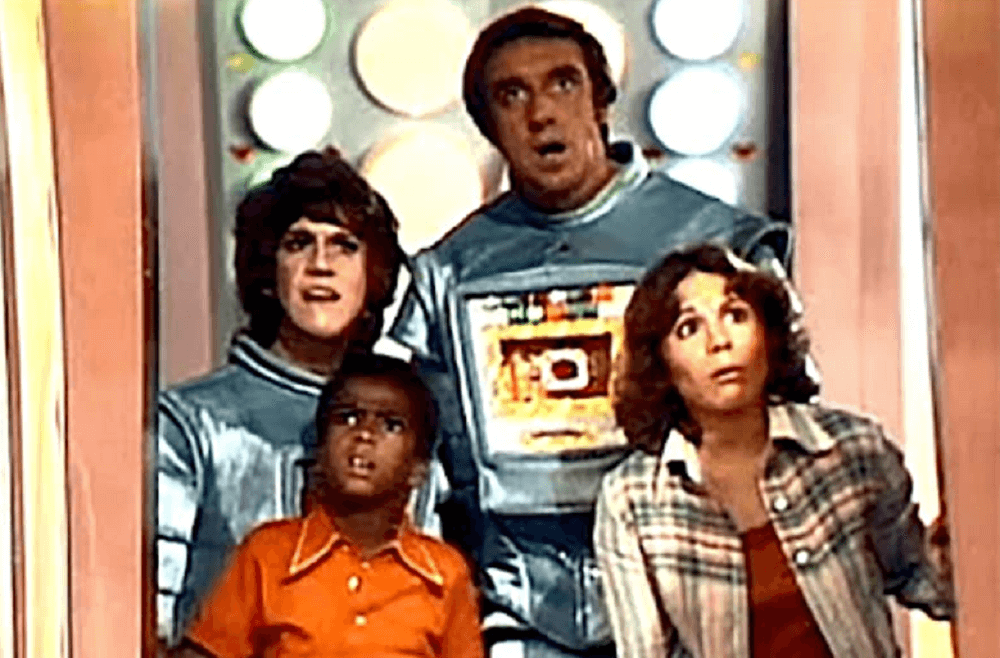
Created by the Krofft brothers and Si Rose (who had also helped bring Sigmund to the screen), The Lost Saucer made great use of the brothers’ trademark creations, populating each episode with bizarre alien creatures, and each episode was designed to impart a lesson to its young audience. One episode had the foursome land in a time where humans had grown obese through laziness, another saw humans abandon their names for a string of numbers, and there was even time to visit Atlantis, where the saucer was turned into a TV studio for some reason.
Sixteen episodes aired between September and December 1975, one more than Far Out Space Nuts, but both shows were absent when the Fall 1976 schedules were published, although they did find their way into syndication. The Kroffts returned that year with The Krofft Supershow on ABC, as well as season three of Land of the Lost on NBC, but that’s a story for 1976’s The Telephemera Years. In many ways, Far Out Space Nuts and The Lost Saucer marked the end of the classic era for the brothers, and later attempts to do children’s variety, a Saturday morning show starring foul-mouthed comic Richard Pryor, and an adult sitcom that used the duo’s creations to ape popular figures of the late-1980s would all garner mixed results. For devoted fans of the pair, things were never better than that five year period between HR Pufnstuf and Land of the Lost’s debuts, a time full of inventive costumes, surreal situations, and a warmth that emanated out of the screen.
Next time on Titans of Telephemera: We switch over to animated action with the Ruby-Spears years!
Check out our other Telephemera articles:
The Telephemera years: 1966 (part 1, 2, 3, 4)
The Telephemera Years: 1968 (part 1, 2, 3, 4)
The Telephemera Years: 1969 (part 1, 2, 3, 4)
The Telephemera Years: 1971 (part 1, 2, 3, 4)
The Telephemera Years: 1973 (part 1, 2, 3, 4)
The Telephemera Years: 1975 (part 1, 2, 3, 4)
The Telephemera Years: 1977 (part 1, 2, 3, 4)
The Telephemera Years: 1980 (part 1, 2, 3, 4)
The Telephemera Years: 1982 (part 1, 2, 3, 4)
The Telephemera Years: 1984 (part 1, 2, 3, 4)
The Telephemera Years: 1986 (part 1, 2, 3, 4)
The Telephemera Years: 1987 (part 1, 2, 3, 4)
The Telephemera Years: 1990 (part 1, 2, 3, 4)
The Telephemera Years: 1992 (part 1, 2, 3, 4)
The Telephemera Years: 1995 (part 1, 2, 3, 4)
The Telephemera Years: 1997 (part 1, 2, 3, 4)
The Telephemera Years: 2000 (part 1, 2, 3, 4)
The Telephemera Years: 2003 (part 1, 2, 3, 4)
The Telephemera Years: 2005 (part 1, 2, 3, 4)
The Telephemera Years: 2008 (part 1, 2, 3, 4)
Titans of Telephemera: Irwin Allen
Titans of Telephemera: Stephen J Cannell (part 1, 2, 3, 4)
Titans of Telephemera: Hanna-Barbera (part 1, 2, 3, 4, 5)
Titans of Telephemera: Kenneth Johnson
Titans of Telephemera: Glen A Larson (part 1, 2, 3, 4)
Titans of Telephemera: Quinn Martin (part 1, 2)

